The MGA With An Attitude
| MGAguru.com |
|
MGAguru.com |
MGA Guru Is GOING MOBILE - (October 16 - October 31, 2024)
Wednesday - October 16, 2024:
 Thinking about a visit to the machine shop. but we don't have a bare block to hand him yet. Measured the bore size in the short block. finding it to be standard bore. That makes me think someone "overhauled" it with honing and new rings without reboring, and we don't know how many miles are on it before and after the rework. But okay anyway, even if it does need a rebore and new pistons. Begin some disassembly, and start a shopping list for parts we know we will need. More consideration of the standard size bore with no ridge at top of bore, and light honing marks remaining in the bores, implying low mileage after receiving new rings. Food for thought. There may be a glimmer of hope here.
Thinking about a visit to the machine shop. but we don't have a bare block to hand him yet. Measured the bore size in the short block. finding it to be standard bore. That makes me think someone "overhauled" it with honing and new rings without reboring, and we don't know how many miles are on it before and after the rework. But okay anyway, even if it does need a rebore and new pistons. Begin some disassembly, and start a shopping list for parts we know we will need. More consideration of the standard size bore with no ridge at top of bore, and light honing marks remaining in the bores, implying low mileage after receiving new rings. Food for thought. There may be a glimmer of hope here.
Thursday - October 17, 2024:
Needing to disassemble the short block today for thorough analysis, to decide what it needs before taking it to the
machine shop. We are about to encounter all of the mysteries and curiosities of an engine with mostly unknown history, but known to have been worked on by someone else before us.
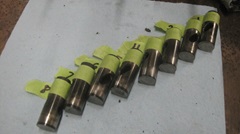
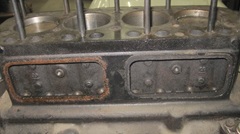
 Pull off the tappet covers, which is when we first discover that the gaskets were stuck on both sides with lots of RTV sealant. Finding all of the tappets still in their respective bores. That's good news, just in case the tappets and cam shaft
might be good enough to continue use. Needing to mate the tappets with original respective cam lobes, number all the tappets in respective order for possible later reassembly. Also, as so happens, all of the tappets are extremely clean with no visible wear or pitting on the bottom ends, which may bode well for the camshaft. Now we are excited to dig a little deeper. Pull off the tappet covers, which is when we first discover that the gaskets were stuck on both sides with lots of RTV sealant. Finding all of the tappets still in their respective bores. That's good news, just in case the tappets and cam shaft
might be good enough to continue use. Needing to mate the tappets with original respective cam lobes, number all the tappets in respective order for possible later reassembly. Also, as so happens, all of the tappets are extremely clean with no visible wear or pitting on the bottom ends, which may bode well for the camshaft. Now we are excited to dig a little deeper.
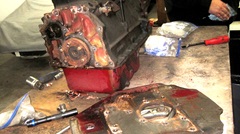

 Remove the TALL rear plate, which we will ultimately be leaving behind, as we need to use the gearbox mounting plate currently in the car to mate this 18G engine to the early MGA low starter gearbox Sure enough, gasket glued on both sides all over for no reason, as it is sandwiched between two machined surfaces. The only place this gasket seals anything is just in the small circle around the rear end of the camshaft. Also there was sealant in the drain slot below the crankshaft, which may have caused oil to get into the bellhousing around the flywheel and clutch assembly (possible slipping clutch). This is a hint about the character of the person who was last assembling this engine. Remove the TALL rear plate, which we will ultimately be leaving behind, as we need to use the gearbox mounting plate currently in the car to mate this 18G engine to the early MGA low starter gearbox Sure enough, gasket glued on both sides all over for no reason, as it is sandwiched between two machined surfaces. The only place this gasket seals anything is just in the small circle around the rear end of the camshaft. Also there was sealant in the drain slot below the crankshaft, which may have caused oil to get into the bellhousing around the flywheel and clutch assembly (possible slipping clutch). This is a hint about the character of the person who was last assembling this engine.
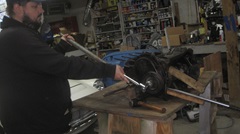
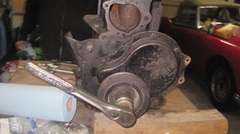
 Then we had some "fun" trying to remove the crank pulley retaining bolt, which incidentally had a used and wrinkled locktab washer that was not bent up. Very tight, not wanting to come loose. Got the two-pound hammer after the 1/2-inch drive (Craftsman) ratchet wrench, but it wouldn't budge no mater how hard I would pound on it for impact. Without a flywheel attached, there was not enough mass inertia to prevent the crankshaft and con-rods from turning. That was the point when we had to remove the sump (yes, gasket glued on both sides) to get some boards inside to block up the crankshaft to wrench on it with breaker bars. It required two of us 250+ pound guys with all of our weight, for sure more than 300 lb-ft torque. We were about to get the acetylene torch to heat he bolt, thinking it might be secured with thread lock adhesive. But when we gave it one last try and jumped on it with vigor, it finally came loose. Then we had some "fun" trying to remove the crank pulley retaining bolt, which incidentally had a used and wrinkled locktab washer that was not bent up. Very tight, not wanting to come loose. Got the two-pound hammer after the 1/2-inch drive (Craftsman) ratchet wrench, but it wouldn't budge no mater how hard I would pound on it for impact. Without a flywheel attached, there was not enough mass inertia to prevent the crankshaft and con-rods from turning. That was the point when we had to remove the sump (yes, gasket glued on both sides) to get some boards inside to block up the crankshaft to wrench on it with breaker bars. It required two of us 250+ pound guys with all of our weight, for sure more than 300 lb-ft torque. We were about to get the acetylene torch to heat he bolt, thinking it might be secured with thread lock adhesive. But when we gave it one last try and jumped on it with vigor, it finally came loose.
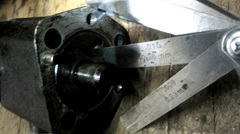
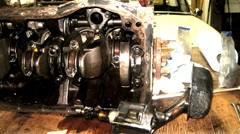
 Next move was to remove and inspect the oil pump and screen. The sump screen had a very small tear at bottom, okay, we'll order a new one so we don't have to remove the sump from the old engine before we get the new engine built up. Well actually, we don't want to remove the engine from the car until the new one is ready to drop in. Then we opened the oil pump to measure internal clearance. When we got up to 0.010-inch feeler gauge between the rotors we quit, as it was grossly more than the 0.006" max allowed. Put a new oil pump on the order list, again so we don't have to remove the old engine yet. This is when we stopped to wonder about the DPO re-ringing the engine with long mileage without checking or changing the oil pump. I don't think any responsible pro shop would do that. And, I don't think it could possibly wear that much since the ring job. Well, the engine was pretty dirty inside, like maybe no oil change for at least 10 years,but no sludge in the sump, so that must have been cleaned out along with the ring job. Next move was to remove and inspect the oil pump and screen. The sump screen had a very small tear at bottom, okay, we'll order a new one so we don't have to remove the sump from the old engine before we get the new engine built up. Well actually, we don't want to remove the engine from the car until the new one is ready to drop in. Then we opened the oil pump to measure internal clearance. When we got up to 0.010-inch feeler gauge between the rotors we quit, as it was grossly more than the 0.006" max allowed. Put a new oil pump on the order list, again so we don't have to remove the old engine yet. This is when we stopped to wonder about the DPO re-ringing the engine with long mileage without checking or changing the oil pump. I don't think any responsible pro shop would do that. And, I don't think it could possibly wear that much since the ring job. Well, the engine was pretty dirty inside, like maybe no oil change for at least 10 years,but no sludge in the sump, so that must have been cleaned out along with the ring job.
 Then it was time to remove the timing chain and sprockets before we could remove the camshaft. The timing cover was a very original type for this model engine with the oil seal installed from the front, same as late model MGA engines. I like this cover, as it is possible to replace the rubber seal without removing the cover from the engine. With the cover open we can see the oil thrower ring, with the deep cup shape. Even though this thrower has a different part number, this application can use the same oil thrower as early MGA with the felt seal timing cover. Judging from the dry interior and surface rust, this engine must have been sitting in humid storage for a long time, but the cylinder head must have been removed more recently, because there was still oil on the cylinder walls. Curious. Then it was time to remove the timing chain and sprockets before we could remove the camshaft. The timing cover was a very original type for this model engine with the oil seal installed from the front, same as late model MGA engines. I like this cover, as it is possible to replace the rubber seal without removing the cover from the engine. With the cover open we can see the oil thrower ring, with the deep cup shape. Even though this thrower has a different part number, this application can use the same oil thrower as early MGA with the felt seal timing cover. Judging from the dry interior and surface rust, this engine must have been sitting in humid storage for a long time, but the cylinder head must have been removed more recently, because there was still oil on the cylinder walls. Curious.
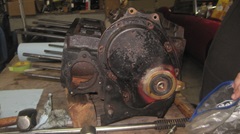
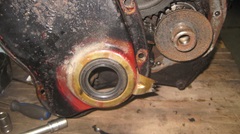
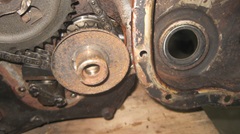
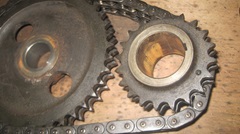
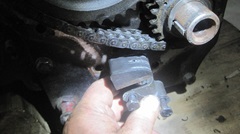 Finally the timing chain and sprockets and tensioner are off. the crank sprocket teeth will cut your fingers if you pick it up and squeeze it, so lots of miles here, probably more than 100,000. The chain is quite loose along with a worn tensioner, so add the whole cam timing set to the order list.
Finally the timing chain and sprockets and tensioner are off. the crank sprocket teeth will cut your fingers if you pick it up and squeeze it, so lots of miles here, probably more than 100,000. The chain is quite loose along with a worn tensioner, so add the whole cam timing set to the order list.
On to the ignition side of the engine, we need to remove the distributor drive gear before the camshaft will come out. Oddly
enough, the cam can come out the front without removing the oil pump drive gear, so the cam could be changed with engine in the car without removing the sump. BTDT, so I know it works (at least in the MGA).
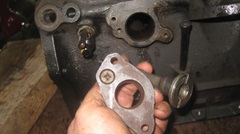

 Remove one flat head screw, and whack the diamond on the ears with a hammer to get the small casting to rotate, and it should come right out. Then reach in with a long 5/16-24-UNF threaded stud which you screw into the timing gear as a handle to pull it out. Do be careful and have a good grip on it so you don't drop it into the sump if the pan is still in place. BTDT too. Remove one flat head screw, and whack the diamond on the ears with a hammer to get the small casting to rotate, and it should come right out. Then reach in with a long 5/16-24-UNF threaded stud which you screw into the timing gear as a handle to pull it out. Do be careful and have a good grip on it so you don't drop it into the sump if the pan is still in place. BTDT too.
 Finally we got to pull out the camshaft for inspection, with high hopes, considering the good condition of the tappets. Finally we got to pull out the camshaft for inspection, with high hopes, considering the good condition of the tappets.
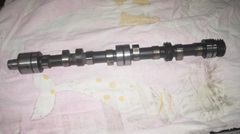
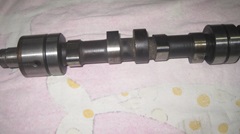
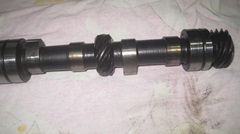
We carefully measured base circle and lobe height for each cam lobe. They were not all the same, varying by as much as 0.010". It seemed disappointing at first, until we did a little math. Subtracting base circle from lobe height yields the lift distance of the individual cam lobe. And the numbers were:
Lobe Lobe Base Lobe
Number Height - Circle = Lift
1 1.385 1.120 .265
2 1.375 1.110 .265
3 1.383 1.118 .265
4 1.383 1.118 .265
5 1.377 1.112 .265
6 1.383 1.118 .265
7 1.382 1.117 .265
8 1.384 1.120 .264 (did I miss this measurement by 0.001"?)
|
This appears to be a perfect camshaft with identical lift for each lobe. Variations in base circle imply that it may be a reground cam where each lobe was ground with the same cam follower, just ground to slightly different depth as needed to clean up. This is indeed good news, as now we can put the same cam and tappets back into the engine, don't need to buy new parts. By the book, standard cam lift should be 0.250", so it looks like we have a little bonus here with 0.015" extra cam lift.With standard 1.42:1 rocker arms, this should make 0.375 valve lift. Peachy.
Note to self: May need to grind small clearance eyebrows in the block for lift clearance on the exhaust valves, because since the late 90's my "18: head has been shaved 0.047" to reduce chamber volume from 43cc to 38cc to have correct compression ratio on a 1500 0r 1600cc engines.
Both end plates off, only the crankshaft, conrods and pistons still left in the block. Stripping parts off the outside and removing the head studs, about to remove pistons and crankshaft. Thinking about taking the bare block to the machine shop for measurement of the journals and cylinder bores to see if it needs boring out or might be good to use as is (mostly wishful thinking).
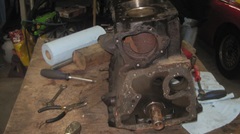
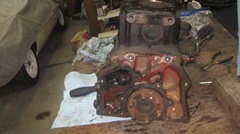

When we pulled out #1 piston we got some surprises. a rod bearing 0.010 undersize, meaning the crankshaft was reground. Hopes just jumped a little higher.
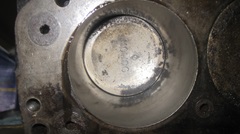
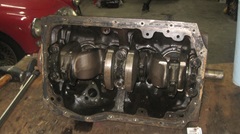
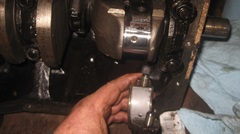
Wonderful springy new-looking piston rings on the standard bore pistons, and all the cylinder bores appear to have residual honing marks in otherwise perfect looking bores. Yeah, gotta check this out. We carefully removed the three compression rings, keeping them in order. Each in turn was placed into the bore, pushed 1-inch down from the top, to measure ring gaps. They all had 0.012" gap, and 0.014" feeler wouldn't fit in the gap., and same in all four bores. The specified range by the book is 0.012" to 0.017" ring gap. Now I'm beginning to think maybe this block has been sleeved, and may have near zero running time since the machine work.
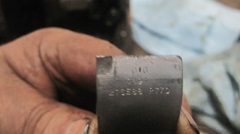

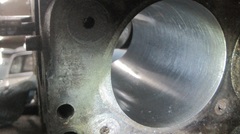
Executive decision, put the piston back in before we walk away for the night, and have more time to think about it.

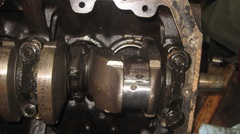
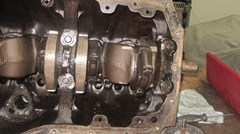
Friday - October 18, 2024:
Decision time. New standard size bores and rings, fresh reground cam and new tappets, reground crankshaft with new bearings. We are going to reassemble this engine with no additional machine work, so not going to the machine shop. Get our act together and order some new parts, like a new MGA water pump and bolts, oil pump and screen, timing chain and sprockets and tensioner, camshaft thrust plate, all the gaskets and seals and locktabs, new engine mounts, a spigot bushing for rear end of the crankshaft. Just under $300, seems like a steal for assembling a whole new engine. Parts should arrive early next week. Get a good start on processing lots of photos and notes from yesterday (see above).
Saturday - October 19, 2024:
More time spent on the photos and notes. The more I think about this the better I feel about this jewel of a new found engine.in such good condition. Thinking it may have been sleeved back to standard bore, because it is exact bore size with no notable wear. Took another look at the block, but cannot see any telltale joint lines for sleeves. The pistons all have the common "2" in a diamond stamp. Had to search a while to find the matching Diamond2 stamps on top of the block. The block appears to have been decked slightly, just a clean up cut maybe half the depth of the diamond stamps. That could go along with topping off new sleeves. The pistons still stop well shy of the top surface.
 Turning the crankshaft, park pistons at TDC and BDC, and the crank turns easily, meaning all free turning bearings. But the pistons seem to drag in the bores more tenaciously than they should in some spots, not all the way up. This could be gummed up some with dried oil from long term storage, so we plan to remove pistons one at a time to clean the pistons and bores, and verify they will run freely in the bores. Job for another day. Turning the crankshaft, park pistons at TDC and BDC, and the crank turns easily, meaning all free turning bearings. But the pistons seem to drag in the bores more tenaciously than they should in some spots, not all the way up. This could be gummed up some with dried oil from long term storage, so we plan to remove pistons one at a time to clean the pistons and bores, and verify they will run freely in the bores. Job for another day.
 Researching the harmonic balancer, by the book, the balancer was introduced in early production of 18G engines, this one with 18000+ serial number is far enough along to have the balancer as original issue. But I think I may delete the balancer and revert to earlier issue riveted steel crank pulley, just because it is easier to R&R the engine without removing the pulley or moving the steering rack in the MGA. Anyone want to try talking me out of that? I notice the balancer pulley does have the indented crescent to knock down the tab washer, so it uses the same tab washer as the MGA. I will also be using the MGA crank dog nut, so the hand crank will still work in the MGA. Learning new things every day. Researching the harmonic balancer, by the book, the balancer was introduced in early production of 18G engines, this one with 18000+ serial number is far enough along to have the balancer as original issue. But I think I may delete the balancer and revert to earlier issue riveted steel crank pulley, just because it is easier to R&R the engine without removing the pulley or moving the steering rack in the MGA. Anyone want to try talking me out of that? I notice the balancer pulley does have the indented crescent to knock down the tab washer, so it uses the same tab washer as the MGA. I will also be using the MGA crank dog nut, so the hand crank will still work in the MGA. Learning new things every day.
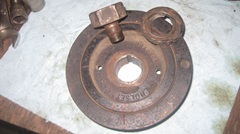

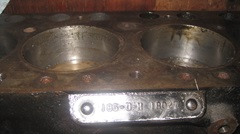
Sunday - October 20, 2024:
Almost certain my parts order was not shipped on Friday, because it hasn't been billed yet. Hurry up and wait?
 One of those drudgery days for clerical work on parts orders and inventory lists. With more consideration of the "new" short block assembly, I'm coming around to believe it was a well worn engine, then sleeved and rebored back to standard bore size with new pistons and rings, new (reground) cam and tappets, reground crankshaft with new bearings, then reassembled with the old worn timing chain and sprockets and tensioner and the old oil pump. But I still can't stop wondering, who would do that? The pistons are still stiff in the bores, too much friction to turn the crankshaft without a long handle, likely a side effect from long term storage. So we need to R& R the pistons for cleaning. The main and rod bearings are good, because at TDC I can turn the crankshaft easily with fingers only. One of those drudgery days for clerical work on parts orders and inventory lists. With more consideration of the "new" short block assembly, I'm coming around to believe it was a well worn engine, then sleeved and rebored back to standard bore size with new pistons and rings, new (reground) cam and tappets, reground crankshaft with new bearings, then reassembled with the old worn timing chain and sprockets and tensioner and the old oil pump. But I still can't stop wondering, who would do that? The pistons are still stiff in the bores, too much friction to turn the crankshaft without a long handle, likely a side effect from long term storage. So we need to R& R the pistons for cleaning. The main and rod bearings are good, because at TDC I can turn the crankshaft easily with fingers only.
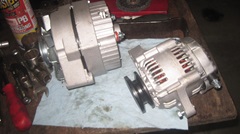
 Nice chat with our host mid day. Among other things he insisted on a tech session pulling out several alternators from American cars, suggesting I should put one of those in my MGA, mostly because they are cheap and easy to source. While he has a point, none of them are direct bolt-on with the MG engine without some custom made brackets. Been there before with the Mitsubishi alternator, and I'm not fond of the required special mods, especially if you have to modify the alternator itself every time it needs to be replaced. But I do like the small racing alternator. -- He was also pressure washing a recent acquisition, a late model MG Midget 1500 (currently sans engine). Story is, it was in a flood, maybe twice, from a recent hurricane storm surge. There was mud all through it, high enough to be on the heater shelf. There will likely be water in the gearbox and differential. With the interior fabrics removed, after pressure washing you wouldn't know it was ever flooded. And it looks like a nice solid body with very little rust. Maybe few perforated spots on the floor near the rear bulk head. Otherwise sand blast it and paint it? Nice chat with our host mid day. Among other things he insisted on a tech session pulling out several alternators from American cars, suggesting I should put one of those in my MGA, mostly because they are cheap and easy to source. While he has a point, none of them are direct bolt-on with the MG engine without some custom made brackets. Been there before with the Mitsubishi alternator, and I'm not fond of the required special mods, especially if you have to modify the alternator itself every time it needs to be replaced. But I do like the small racing alternator. -- He was also pressure washing a recent acquisition, a late model MG Midget 1500 (currently sans engine). Story is, it was in a flood, maybe twice, from a recent hurricane storm surge. There was mud all through it, high enough to be on the heater shelf. There will likely be water in the gearbox and differential. With the interior fabrics removed, after pressure washing you wouldn't know it was ever flooded. And it looks like a nice solid body with very little rust. Maybe few perforated spots on the floor near the rear bulk head. Otherwise sand blast it and paint it?
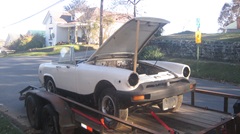
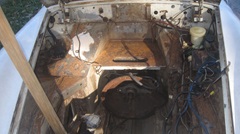

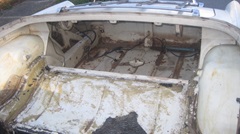
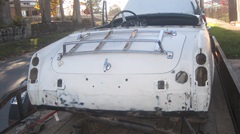
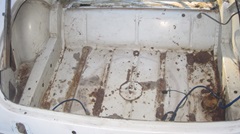
Monday - October 21, 2024:
Cheers, I got billed, so I think my parts order is on the way, should be here in a couple days.

 Grubeguy from the MGA forum has done a video on fabrication of his trailer hitch for MGA with a square receiver for a quick change hitch ball attachment. Nice video. https://www.youtube.com/watch?v=62S0b85_ifo Grubeguy from the MGA forum has done a video on fabrication of his trailer hitch for MGA with a square receiver for a quick change hitch ball attachment. Nice video. https://www.youtube.com/watch?v=62S0b85_ifo
His new hitch is patterned after my 1989 design for full Class 1 trailer hitch. The least I could do was to update my trailer hitch tech page to add a link to the new video.
Tuesday - October 22, 2024:
take it easy day I guess, waiting for parts. Don't remember what else I was doing.
Wednesday - October 23, 2024:
I certainly know what we were doing today. Going to figure out why there was a hitch in the git-along when turning the crankshaft, easy for half a turn, then harder for half a turn. Loosened all the bearing caps to try again, no change.
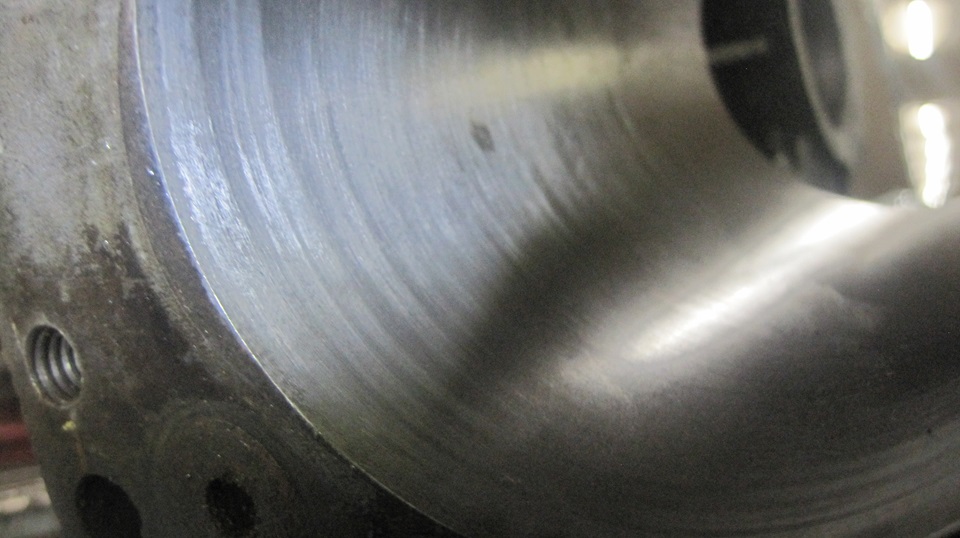 Began to R&R pistons, thinking this might be oil wiper rings dragging. No.1 looked fine, as we had seen it before. Put the big end cap back on it and set it aside. #2 had some minor making on one side of the bore, but it might hone out. #3 had what looked like minor chatter marks in the bore ,also might hone out. #4 more of a shocker with some pitting in the bore. Might have been corrosion at some rings when parked in storage for many years. I can feel those divots with my fingers, so that does not look like it would hone out. Good feelings from the days before suddenly sank. Now looking like it will need rebore plus the cost of new pistons and rings. And of course there will be a slight delay (the worst part).
Began to R&R pistons, thinking this might be oil wiper rings dragging. No.1 looked fine, as we had seen it before. Put the big end cap back on it and set it aside. #2 had some minor making on one side of the bore, but it might hone out. #3 had what looked like minor chatter marks in the bore ,also might hone out. #4 more of a shocker with some pitting in the bore. Might have been corrosion at some rings when parked in storage for many years. I can feel those divots with my fingers, so that does not look like it would hone out. Good feelings from the days before suddenly sank. Now looking like it will need rebore plus the cost of new pistons and rings. And of course there will be a slight delay (the worst part).
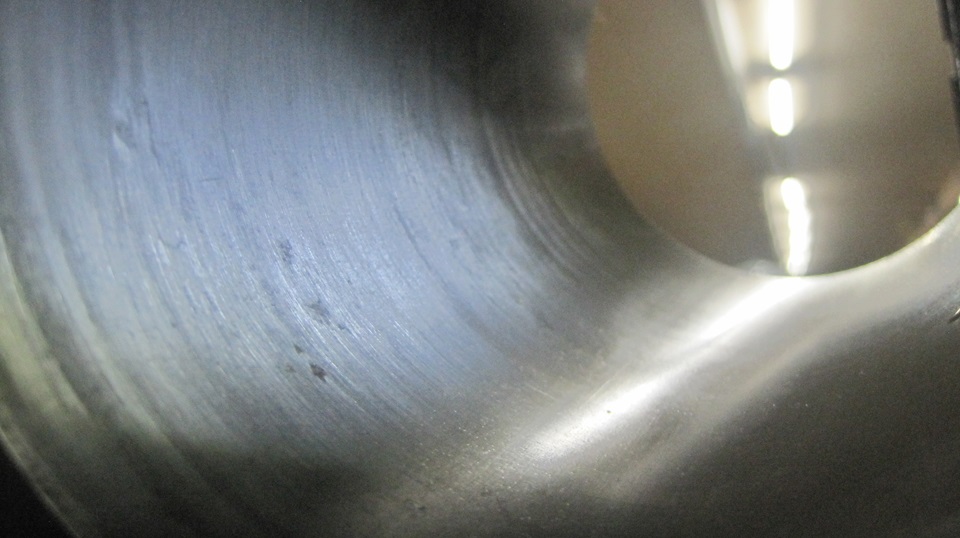
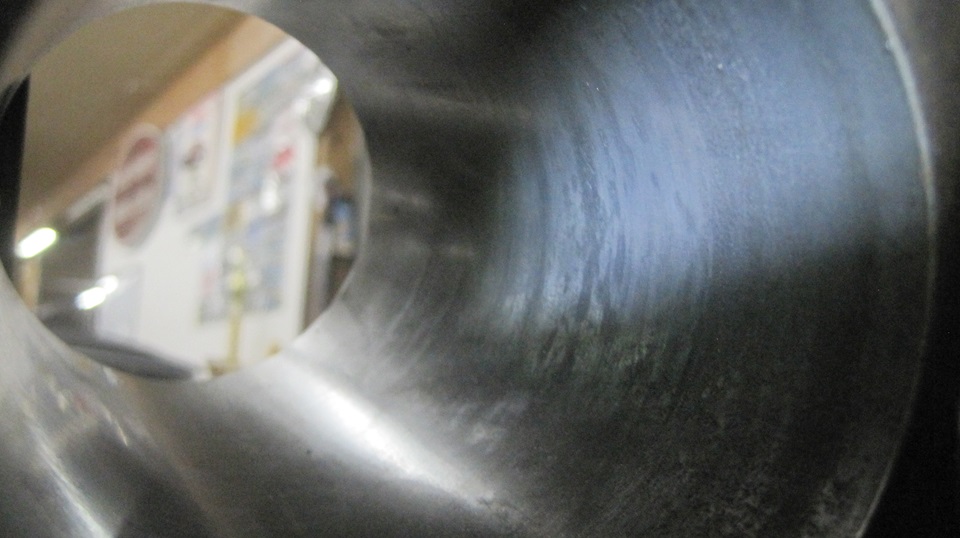
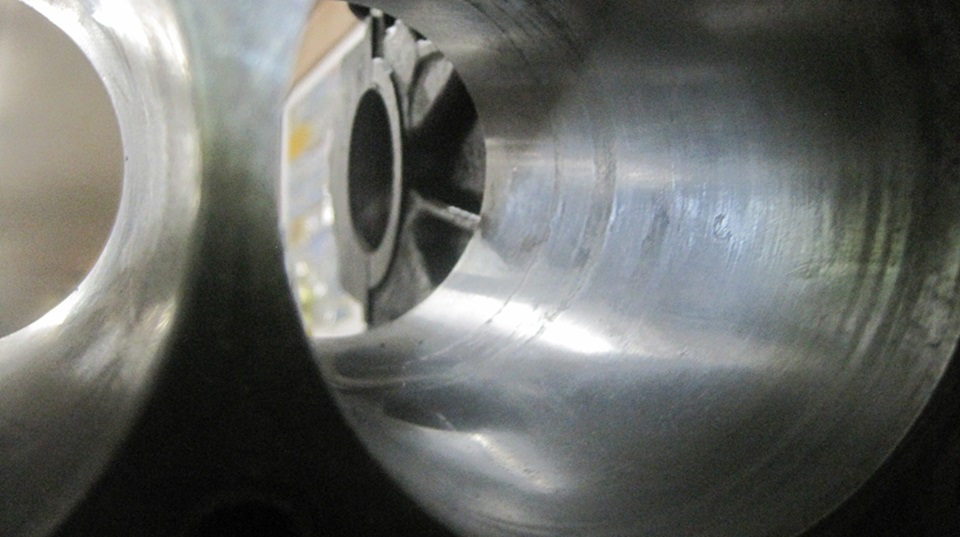
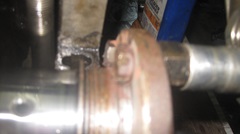 Figure this block will go to the machine shop in the morning,so finish stripping it down. There was still a hitch in the git-along turning the crankshaft, but with everything else out of the bock it didn't take long to figure that out. It turned out one of the flywheel bolts was not fully seated in the crank rear flange, so the bolt head was dragging against the back of the block (or main bearing cap). We installed a spacer and hex nut, and the stud pulled right into place easily. Then the crank would spin freely with two fingers. That was when I figured this engine had never run since it was "rebuilt" many years ago.
Figure this block will go to the machine shop in the morning,so finish stripping it down. There was still a hitch in the git-along turning the crankshaft, but with everything else out of the bock it didn't take long to figure that out. It turned out one of the flywheel bolts was not fully seated in the crank rear flange, so the bolt head was dragging against the back of the block (or main bearing cap). We installed a spacer and hex nut, and the stud pulled right into place easily. Then the crank would spin freely with two fingers. That was when I figured this engine had never run since it was "rebuilt" many years ago.
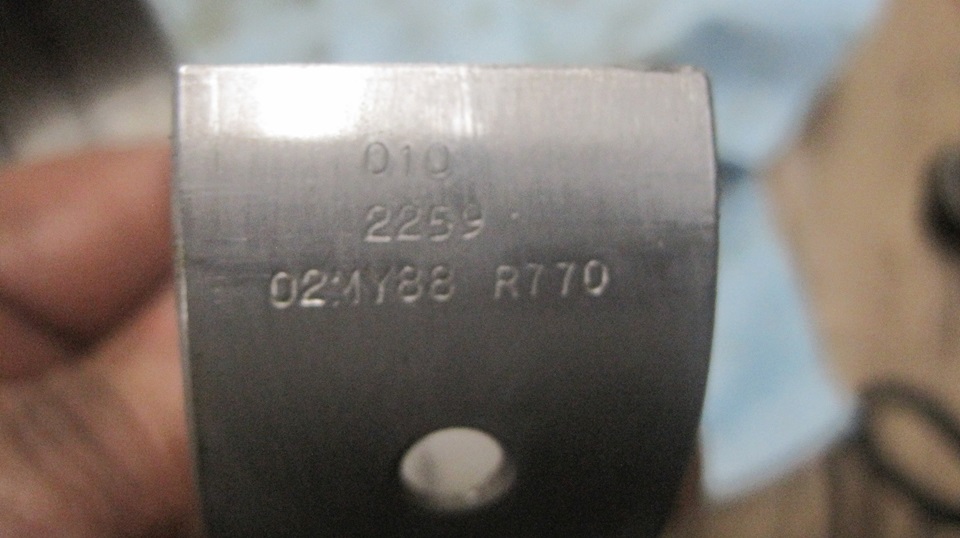
 The main bearing caps came out okay with a little tug from a slide hammer. Scroll seal surfaces at rear of crank and mating block surfaces look good, never touched. All of the bearing journals look like a freshly reground crankshaft with 0.010/0.010 journals and all new bearings; all keepers. Wrap them up and set aside. Reinstall the main bearing caps for benefit of the machine shop -- just one thing has me kicking myself now. I shouldn't let good feelings and wishful thinking get in the way of good judgement. If I had pulled the pistons out a few days earlier (like Friday, maybe), the block could have gone to the shop a few days earlier. The main bearing caps came out okay with a little tug from a slide hammer. Scroll seal surfaces at rear of crank and mating block surfaces look good, never touched. All of the bearing journals look like a freshly reground crankshaft with 0.010/0.010 journals and all new bearings; all keepers. Wrap them up and set aside. Reinstall the main bearing caps for benefit of the machine shop -- just one thing has me kicking myself now. I shouldn't let good feelings and wishful thinking get in the way of good judgement. If I had pulled the pistons out a few days earlier (like Friday, maybe), the block could have gone to the shop a few days earlier.
Thursday - October 24, 2024:
Turn the mood meter up a few notches.
1.) We bit the bullet and committed to bore the block and buy new pistons, path to a solution.
2.) Took the block to the machine shop his morning. Not deer hunting season yet.
3.) Got a commitment from the shop to finish it by Oct 1. Eight days? That should work.
Friday - October 25, 2024:
Had a few things to do during the day. I think some car parts were supposed to arrive today. House party this evening, kind of fun for a change.
Saturday - October 26, 2024:
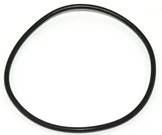
Had a little plumbing problem that ate up a few hours, solved in the end. Got my hands on the parts package in mid afternoon. Everything ordered was there. -- Got a request for more Part Numbers tech information, and ended up adding two new tech pages for the rubber O-ring seals in the rear wheel bearing hubs on the MGAs. This places the factory part numbers on the web site, cross referenced to other pages, allowing these numbers to show up on a web site search.That ate the rest of the day past midnight.
Sunday - October 27, 2024:
Spent some time updating the inventory list to include new parts just received.
Monday - October 28, 2024:
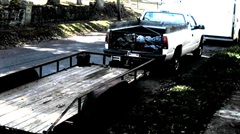 The MG Midget got off the trailer and went into storage today. Empty trailer needed for the Trabant that needs a ride to a car show in about 10 days.
The MG Midget got off the trailer and went into storage today. Empty trailer needed for the Trabant that needs a ride to a car show in about 10 days.
Tuesday - October 29, 2024:
Oops, should have done this yesterday. Called Worldwide Import Auto Parts in Madison, Wisconsin to request a pair of MGA front shock absorbers to replace the ones that have been leaking out all of the oil. Been seven years since these were last replaced. -- Well that was quick. Two rebuilt front shock absorbers on their way, should arrive Thursday afternoon.
Wednesday - October 30, 2024:
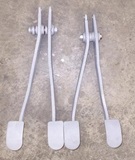
Added a new tech page for increased length of MGA brake and clutch pedals in late 1958.
Thursday - October 31, 2024:
New front shock absorbers have arrived, picked up and in hand. Machine shop has verified tomorrow for reboring the engine block, changing out brass plugs to clean oil ways, modern hot tanking will not damage cam bearings, so no need to change those. We may get the shock absorbers changed today (or early tomorrow). The next challenge will be getting new pistons ordered, once we know the bore size. Remember the flat bed trailer? It needs wiring repair for the lights to work, before next weekend.
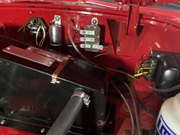 Got it together late night to append an Accessories tech page for Flash-To-Pass option with picures for original factory installation in a 1962 MGA 1600-MK-II "Deluxe".
Got it together late night to append an Accessories tech page for Flash-To-Pass option with picures for original factory installation in a 1962 MGA 1600-MK-II "Deluxe".
|























 Began to R&R pistons, thinking this might be oil wiper rings dragging. No.1 looked fine, as we had seen it before. Put the big end cap back on it and set it aside. #2 had some minor making on one side of the bore, but it might hone out. #3 had what looked like minor chatter marks in the bore ,also might hone out. #4 more of a shocker with some pitting in the bore. Might have been corrosion at some rings when parked in storage for many years. I can feel those divots with my fingers, so that does not look like it would hone out. Good feelings from the days before suddenly sank. Now looking like it will need rebore plus the cost of new pistons and rings. And of course there will be a slight delay (the worst part).
Began to R&R pistons, thinking this might be oil wiper rings dragging. No.1 looked fine, as we had seen it before. Put the big end cap back on it and set it aside. #2 had some minor making on one side of the bore, but it might hone out. #3 had what looked like minor chatter marks in the bore ,also might hone out. #4 more of a shocker with some pitting in the bore. Might have been corrosion at some rings when parked in storage for many years. I can feel those divots with my fingers, so that does not look like it would hone out. Good feelings from the days before suddenly sank. Now looking like it will need rebore plus the cost of new pistons and rings. And of course there will be a slight delay (the worst part). 


 Figure this block will go to the machine shop in the morning,so finish stripping it down. There was still a hitch in the git-along turning the crankshaft, but with everything else out of the bock it didn't take long to figure that out. It turned out one of the flywheel bolts was not fully seated in the crank rear flange, so the bolt head was dragging against the back of the block (or main bearing cap). We installed a spacer and hex nut, and the stud pulled right into place easily. Then the crank would spin freely with two fingers. That was when I figured this engine had never run since it was "rebuilt" many years ago.
Figure this block will go to the machine shop in the morning,so finish stripping it down. There was still a hitch in the git-along turning the crankshaft, but with everything else out of the bock it didn't take long to figure that out. It turned out one of the flywheel bolts was not fully seated in the crank rear flange, so the bolt head was dragging against the back of the block (or main bearing cap). We installed a spacer and hex nut, and the stud pulled right into place easily. Then the crank would spin freely with two fingers. That was when I figured this engine had never run since it was "rebuilt" many years ago. 

 The MG Midget got off the trailer and went into storage today. Empty trailer needed for the Trabant that needs a ride to a car show in about 10 days.
The MG Midget got off the trailer and went into storage today. Empty trailer needed for the Trabant that needs a ride to a car show in about 10 days. 
 Got it together late night to append an Accessories tech page for Flash-To-Pass option with picures for original factory installation in a 1962 MGA 1600-MK-II "Deluxe".
Got it together late night to append an Accessories tech page for Flash-To-Pass option with picures for original factory installation in a 1962 MGA 1600-MK-II "Deluxe". 

















